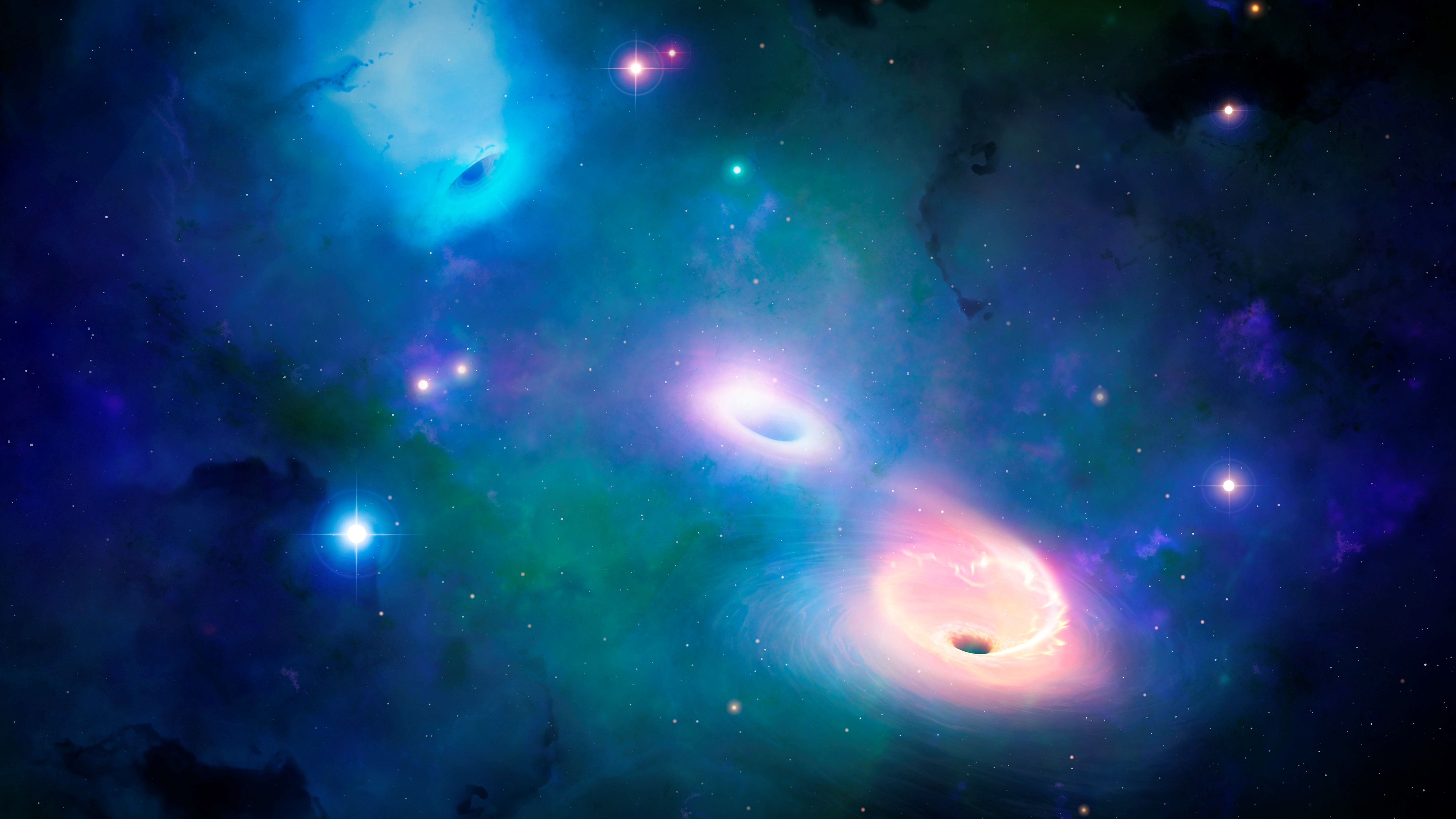Rogue black holes could be wandering at the edges of the Milky Way
There could be 12 of the invisible giants in the Milky Way alone.

An enormous number of rogue supermassive black holes may be wandering around the universe, new simulations find.
In fact, wandering giant black holes may account for a whopping 10% of the nearby universe's black hole mass "'budget,'" the research finds. This means that galaxies like our own could have an average of 12 invisible behemoths prowling around their outskirts, gobbling up anything that gets in their way.
According to the study researchers, because the number of black holes increases the more mass there is in the outer "halo" of material that surrounds galaxies, clusters of galaxies, which have heavy halos, could have even more of the ravenous wanderers.
Related: The 12 strangest objects in the universe
"We expect thousands of wandering black holes in galaxy cluster halos," the researchers wrote in the study.
Just as a panama basket can be woven around the supporting structure of a stone, astronomers think that most galaxies form around supermassive black holes. The gigantic gravitational beasts, often many millions or even billions times more massive than the sun, act as anchors for long trains of gas, dust, stars and planets that swirl in orbit around them. Closer to the black holes, this material spirals faster and heats up, forming an accretion disk that both feeds the black hole and produces the telltale radiation that makes it visible.
Usually the mass of these black holes cements them in the centers of their galaxies, which slowly orbit around each other in clusters called galactic groups. But sometimes, an enormous force — such as a collision between two galaxies — can pop a central supermassive black hole loose, forcing it to wander the universe like a cosmic vagabond.
Get the world’s most fascinating discoveries delivered straight to your inbox.
The wandering monsters can also be set loose when the merging of two black holes is disrupted, sending one or both of them flying.
To estimate how often this occurs, the astronomers ran a set of simulations called Romulus that account for all known rules about how black holes behave to trace how their orbits might evolve over billions of years.
The simulations predicted that the frequent galactic collisions of the early universe, between the time of the Big Bang about 13.7 billion years ago and roughly 2 billion years later, produced enough wanderers to outnumber, and even outshine, their galactically fixed supermassive black hole cousins.
Later, as the universe grew older, many of the loose black holes merged and were recaptured by other supermassive black holes after forming binary systems with them in the centers of galaxies, the simulations found. But many also remained free.
"Romulus predicts that many supermassive black hole binaries form after several billions of years of orbital evolution, while some SMBHs [supermassive black holes] will never make it to the center," the researchers wrote. "As a result, Milky Way-mass galaxies in Romulus are found to host an average of 12 supermassive black holes, which typically wander the halo far from the galactic center."
The researchers "next steps will be to figure out possible hallmarks of the lost invisible giants'" presence out in the universe so that one day soon, we can observe them first hand.
The researchers published their findings in the June issue of the journal Monthly Notices of the Royal Astronomical Society.
Originally published on Live Science.

Ben Turner is a U.K. based writer and editor at Live Science. He covers physics and astronomy, tech and climate change. He graduated from University College London with a degree in particle physics before training as a journalist. When he's not writing, Ben enjoys reading literature, playing the guitar and embarrassing himself with chess.


